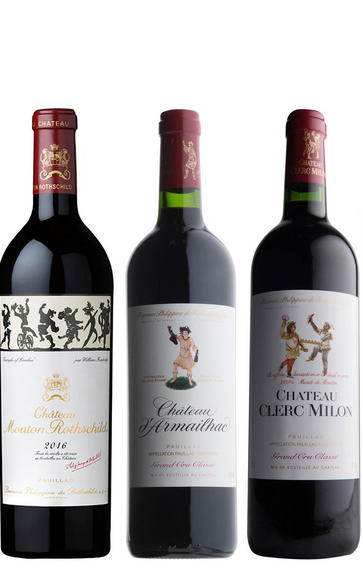
2016 Mixed Bordeaux (Clerc Milon, d'Armailhac & Mouton Rothschild), Three-Bottle Assortment Case
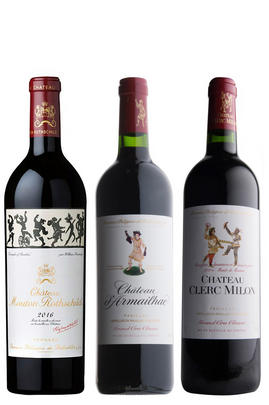
About this WINE
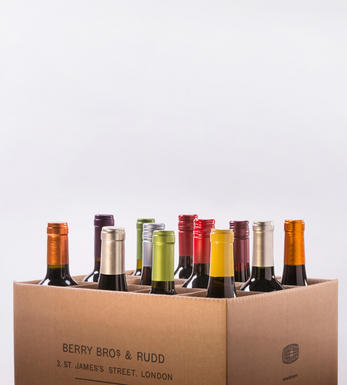
Assortment Mixed Cases
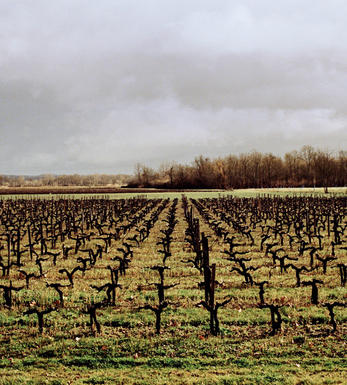
Bordeaux
Bordeaux remains the centre of the fine wine world. The maritime climate on the 45th parallel provides for temperate winters and long, warm summers, perfect conditions for growing grapes suited to the production of classically-constructed, long-lasting wines. This vast region of 120,000ha of vineyards (four times the size of Burgundy) is home to 10,000 wine producers and 57 different AOCs. Red now makes up 88 percent of Bordeaux wine, and is usually referred to as Claret. The origin of this name was to differentiate the lighter-coloured wines of the coastal region from the deeper "black" wines from up-country regions.
The Left Bank, comprising the wine regions of the Médoc, Pessac-Léognan and Graves are planted predominantly with Cabernet Sauvignon, which thrives on the gravelly soils left by the ancient course of the river. This is a thick-skinned variety which ripens late, producing powerful, tannic wines capable of long ageing. It is blended with Merlot, Cabernet Franc and sometimes Petit Verdot. The highlights of the Médoc are the four communes of St- Estèphe (blackcurrant concentration); classical, cedarwood and cigar-box Pauillac; richly-fruited St Julien; and elegant, fragrant Margaux.
On the Right Bank, most famously in St-Emilion and Pomerol, it is the fleshy Merlot grape which prevails, sometimes supported by Cabernet Franc. Here the soils are more mixed, with gravel and clay underpinning the rich, fruity wines of Pomerol. Styles vary more in St-Emilion, depending on the predominance of sand in the lower-lying slopes, or limestone on the hillsides and plateau.
By the 18th century, individual properties - known as châteaux, however humble - were becoming known for the quality of their wines and in 1855, those of the Médoc (plus Haut-Brion, a property commended by Samuel Pepys as early as 1663) were classified into five levels of classed growths. Lafite, Latour, Margaux and Haut Brion were cited as First Growths, to whose ranks Mouton Rothschild was elevated by presidential decree in 1973. Beneath the ranks of the classed growths lies a raft of fine châteaux known as Crus Bourgeois, while a host of less well-known "petits châteaux" still makes attractive, enjoyable Claret at affordable prices.
The other jewel in the Bordeaux crown is the district of Sauternes, making some of the most outstanding sweet white wines in the world (from the likes of Châteaux d'Yquem, Rieussec and Climens). The foggy autumn mornings along the banks of the Garonne River near Sauternes and neighbouring Barsac enable the noble rot, botrytis cinerea, to form on the skins of the grapes, which can still ripen in the afternoon sun as late as the end of October or early November. The Sémillon grape is the prime component, but Sauvignon Blanc and a little Muscadelle are also planted to provide insurance if the weather is less favourable to Sémillon, as well as offering a counterpoint in flavour.
There are many inexpensive dry white wines - more Sauvignon than Sémillon - from regions such as Entre-Deux-Mers and Graves, with just a handful of outstanding properties located in Pessac-Léognan. The most famous of the great dry whites hail from Châteaux Haut Brion, Laville Haut Brion and Domaine de Chevalier.
The finer wines of Bordeaux are sold en primeur in the late spring following the harvest, some two years before the wines are ready for physical delivery. The châteaux offer their wines through a system of Bordeaux négociants (brokers) who sell them on to importers round the world. Prices vary enormously from one vintage to another, dependent on perceived quality and world demand, which shows no signs of diminishing, especially for the great years.
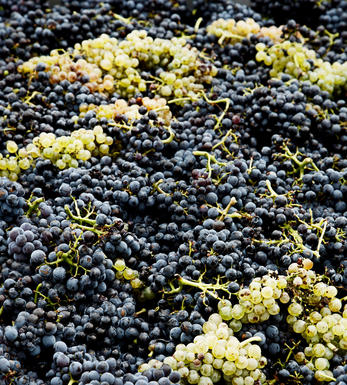
Other Varieties
There are over 200 different grape varieties used in modern wine making (from a total of over 1000). Most lesser known blends and varieties are traditional to specific parts of the world.


Buying options
Add to wishlist
Description
This 3-bottle mix case contains one bottle of each of the following:
2016 Château Mouton Rothschild, Pauillac - 100/100
The 2016 Mouton Rothschild is a blend of 83% Cabernet Sauvignon, 15% Merlot, 1% Cabernet Franc and 1% Petit Verdot, with the Cabernet Franc and Petit Verdot vinified together. It has a very deep purple-black colour and slowly slides out of the glass with spicy notes of Sichuan pepper, cloves and cinnamon stick giving way to a core of perfumed black fruits and florals blackcurrant cordial, candied violets, blackberry compote, rose hips and black plums plus suggestions of espresso, damp soil, tar and beef drippings. Medium-bodied, the palate is very firmly structured and jam-packed with latent energy about to burst, offering superbly ripe, grainy tannins and bold freshness to support the intense floral and black fruit layers and finishing very long and very minerally. Powerful, profound wine.
Lisa Perrotti-Brown MW, The Wine Advocate, Oct 2019
2016 Château Clerc Milon, Pauillac - 94+/100
The Cabernet Franc was fantastic this year, so it was all used in the grand vin. The final blend is 55% Cabernet Sauvignon, 29% Merlot, 13% Cabernet Franc, 2% Petit Verdot and 1% Carmenere. Deep garnet-purple coloured, the 2016 Clerc Milon leaps from the glass with beautiful scents of chocolate-covered cherries, plum preserves and crushed blackcurrants with suggestions of lilacs, cardamom, underbrush and unsmoked cigars. Medium to full-bodied, the palate has a firm frame of finely grained tannins and seamless freshness lifting the perfumed fruit to a nice long finish.
Lisa Perrotti-Brown MW, The Wine Advocate, Nov 2018
2016 Château d'Amaillac, Pauillac - 93/100
Deep garnet-purple coloured, the 2016 D'Armailhac opens with gregarious creme de cassis, blackberry pie and mulberries scents with hints of chocolate box, roses and charcoal with a waft of dried sage. Medium-bodied, the palate has a rock-solid frame of firm, grainy tannins and wonderful freshness, finishing long and earthy.
Lisa Perrotti-Brown MW, The Wine Advocate, Nov 2018
wine at a glance
Delivery and quality guarantee